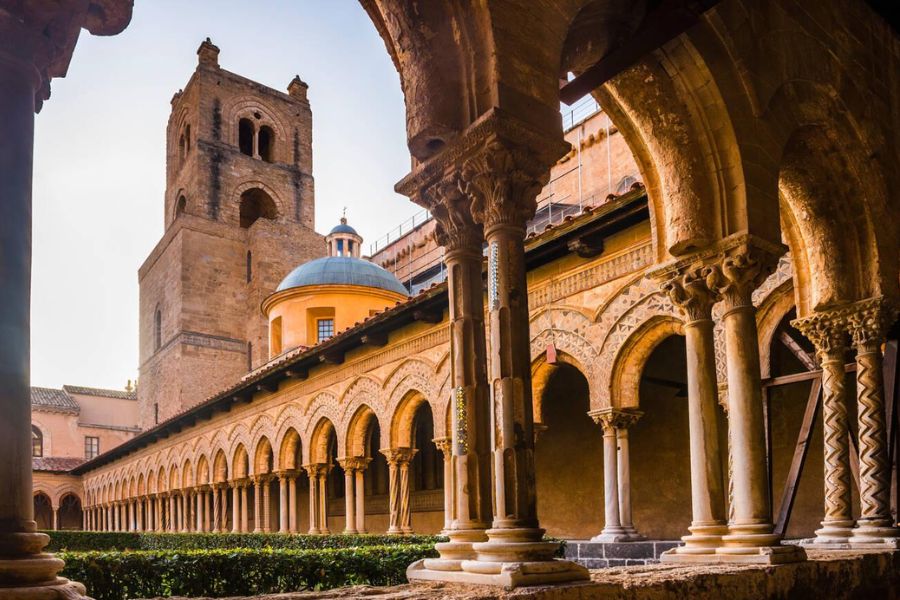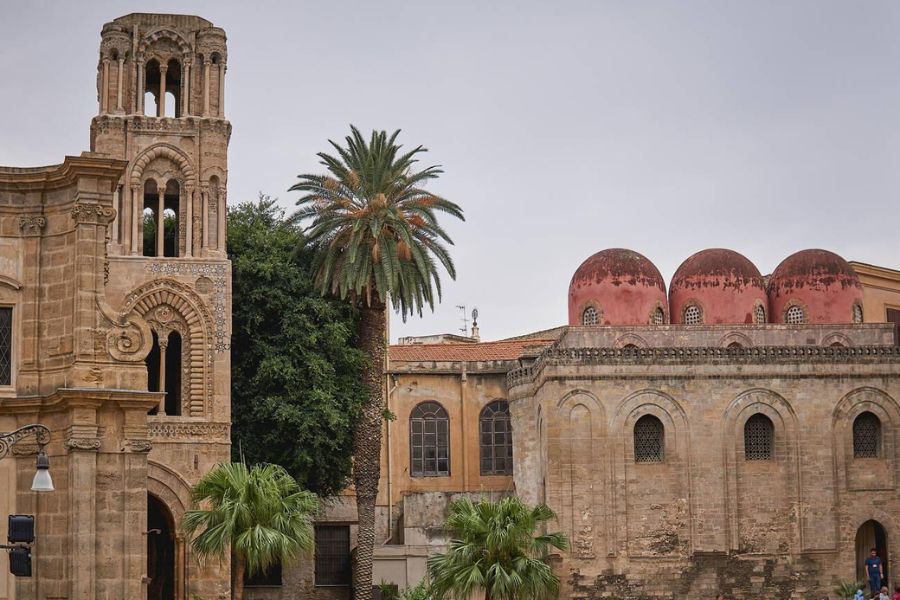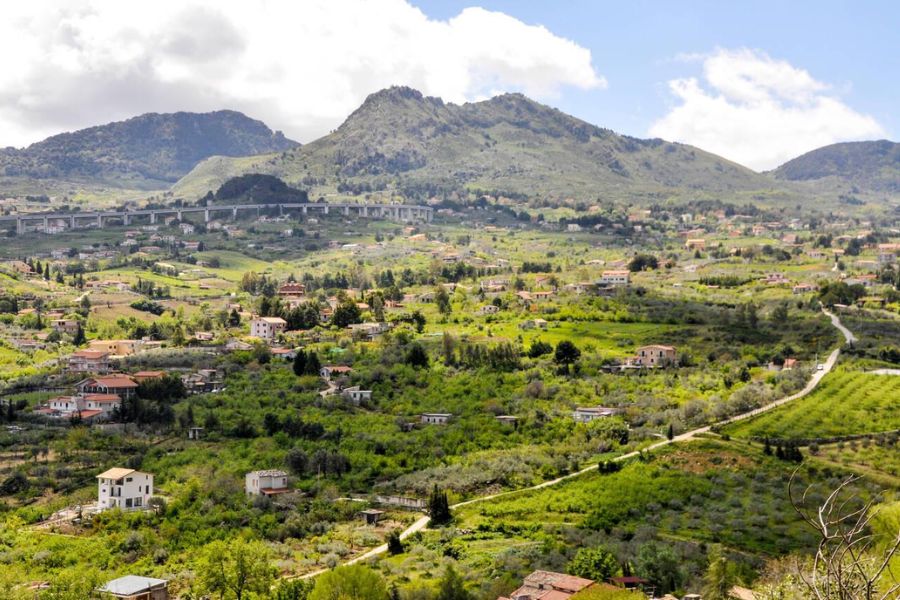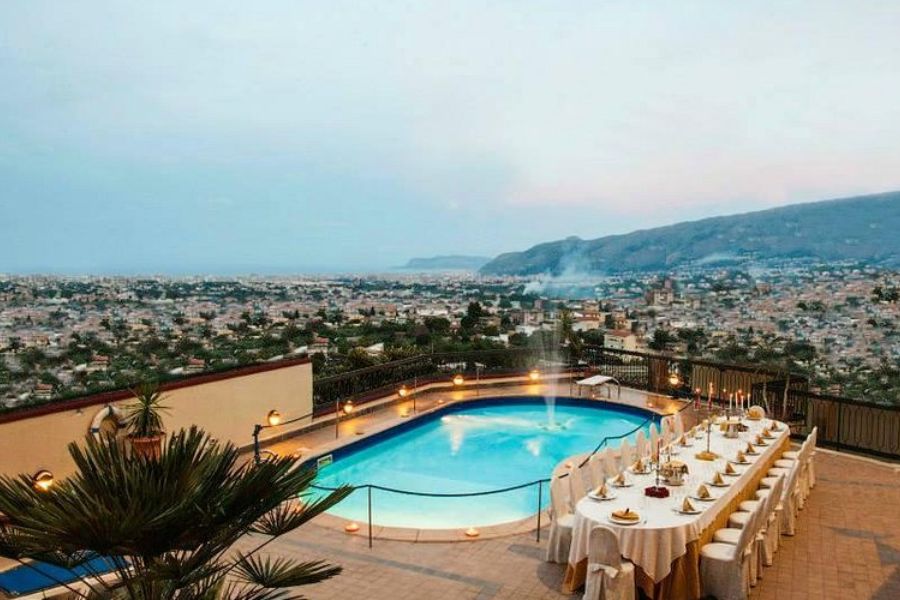High above Palermo’s lively chaos, Monreale Cathedral sits like a golden crown. When I visited, sunlight poured through ancient windows and lit up those legendary gold mosaics. This Norman-Arab-Byzantine wonder, started in 1174 by William II of Sicily, might just be the greatest Norman architectural achievement out there. It’s got jaw-dropping artistry and a killer view over Palermo’s Conca d’Oro.
Hiking up to Monreale from Palermo, I felt like I was getting away with something. You get two big rewards: first, the cathedral’s wild mix of cultures from Sicily’s medieval heyday, and then, those sweeping valley views. Inside, the scale of the gold-covered Bible scenes just floored me. Honestly, I’d put this place up against any cathedral in Europe.

Monreale Cathedral belongs to a UNESCO World Heritage group that includes nine Arab-Norman gems around Palermo. My favorite moment? Climbing up to the upper galleries—getting right up close to the mosaics, then turning to see Palermo sprawled out below. Up here, you escape the city heat and get a perfect launchpad for exploring Sicily’s cultural riches.
The Legacy of Monreale: History and Origins
Monreale Cathedral blends Norman, Arab, and Byzantine influences into something truly spectacular. Its story stretches back centuries, shaped by ambitious Norman rulers who transformed Sicily’s culture forever.
Founding and Norman Influence
Monreale’s story really kicks off in the 12th century, after the Normans conquered Sicily. Climbing those hills above Palermo, I couldn’t help but think—these Normans really knew how to make a statement with architecture.
The Normans took Sicily from Arab rulers in 1072. Roger II, the first Norman king here, built a court that embraced Arab, Byzantine, and Norman traditions. That mix gave birth to the distinct Arab-Norman style you see in Monreale.

The cathedral’s design pulls from all three cultures—Norman muscle, Byzantine artistry, and Arab decorative flair. As I walked through, I kept noticing how these influences swirl together into something brand new.
William II and Norman Kings
William II, Roger II’s grandson, kicked off Monreale Cathedral in 1174. Locals love telling the story: William had a dream where the Virgin Mary showed him a hidden treasure to pay for the cathedral.
William II, known as “The Good,” wanted to outdo his grandfather’s Palatine Chapel. He aimed high—he wanted something even grander than Constantinople’s Hagia Sophia. The result? More than 6,500 square meters of gold mosaics.
This cathedral wasn’t just about faith. William wanted to show he didn’t answer to the Archbishop of Palermo or even the Pope. By making Monreale its own archdiocese, he carved out his own power base right outside the city.
UNESCO World Heritage Recognition
In 2015, Monreale Cathedral finally got its due—UNESCO World Heritage status. It joined “Arab-Norman Palermo and the Cathedral Churches of Cefalù and Monreale” on the list.
UNESCO called out Monreale’s universal value. The cathedral stands as a human masterpiece and a crossroads of cultures.
This listing includes nine buildings that show off the blending of Western, Islamic, and Byzantine worlds. During my tour, guides kept pointing out how this mix led to art and architecture you just won’t find anywhere else in Europe.

Since UNESCO recognition, preservation teams have really stepped up. They work hard to protect the mosaics and cloisters so future generations can experience this place.
Architectural Marvels: Blending Norman, Arab, and Byzantine Styles
Monreale Cathedral might be Sicily’s best example of cultures blending through architecture. The building combines styles in a way that tells the island’s complex story.
Norman Architecture and Structural Design
The cathedral’s bulk and shape scream Norman design—big, fortress-like, unmissable. As I wandered outside, the stone walls and the two square towers at the entrance made a huge impression.
Those towers frame the cathedral against the sky. The Normans loved their buildings sturdy and grand, and Monreale definitely fits the bill.
Inside, you get the classic Norman basilica plan—central nave, side aisles, high ceilings that draw your eyes up.
But what really sets it apart is how this solid Norman structure becomes a canvas for all the other cultural flourishes.
Arab-Norman and Islamic Artistry
You can’t miss the Islamic influence inside. The carved wooden ceiling and the geometric patterns everywhere are pure Arab artistry.
The arches, with their pointed shapes and intricate details, clearly borrow from Arab designs. I found myself staring at the muqarnas—those honeycomb-like decorations that add depth and shadow.
The inlaid marble floors show off complex patterns, sticking to Islamic traditions by avoiding human figures.

In the cloisters, over 200 columns display arabesque patterns that wouldn’t look out of place in a mosque.
Byzantine Influence and Gold
The golden Byzantine mosaics steal the show at Monreale. Nearly 68,000 square feet of walls shimmer with these masterpieces.
Standing under the central dome, I couldn’t stop staring at the Christ Pantocrator mosaic in the apse. Christ’s face—stern but somehow gentle—seems to meet your gaze from every angle.
Byzantine artists used tiny glass pieces set at different angles, making the gold backgrounds shimmer as the light shifts. That gold isn’t just for show—it’s meant to represent divine light.
The mosaics tell Bible stories in vivid detail. They taught medieval worshippers and turned the entire interior into a vision of heaven.
Marble Columns and Carved Capitals
The cathedral’s got over 200 marble columns, each topped with a uniquely carved capital. I took my time in the cloisters, checking out capitals decorated with everything from Bible scenes to mythical creatures and plants.
No two look exactly the same.
Some columns came from ancient Roman buildings—recycling was pretty common back then.
The columns lead your eye through the space and hold up the ornate arches. Their slender shapes play off the hefty Norman walls.
The stone carvers who made these details had real skill, using simple tools to create art that’s survived more than 800 years.
Mosaic Mastery: Inside Monreale Cathedral
Step inside Monreale Cathedral and you’re hit with a flood of gold—6,500 square meters of dazzling mosaics. These Byzantine wonders make up one of the world’s most complete medieval mosaic programs.
Stunning Mosaics and Iconic Christ Pantocrator
When I entered, the Christ Pantocrator in the main apse stopped me in my tracks. Christ raises his right hand in blessing, left hand holding the Gospels.
The gold background glows and shifts with the daylight. There’s something about the Pantocrator’s eyes—they follow you everywhere.

You can’t really grasp the scale until you’re standing right under it. This image anchors the whole space and shows Christ as ruler of all, a classic Byzantine theme.
Byzantine Mosaics: Old and New Testament Scenes
The walls tell Bible stories in mosaic bands. Old Testament scenes start with Creation and cover everything from Noah’s Ark to Moses and the Ten Commandments.
New Testament mosaics focus on Christ’s life, from the Annunciation through the Resurrection. I counted more than 130 separate biblical scenes! Even tiny animals and plants are rendered with surprising detail.
What really got me was the way artists told stories—sometimes several events in one frame, or repeating motifs to tie stories together across the cathedral.
Depictions of the Virgin Mary
Mary appears all over Monreale’s mosaics, showing her huge importance in Byzantine theology. The Madonna and Child in the apse, just below the Pantocrator, stands out.
I spotted her in big moments:
- The Nativity
- Presentation at the Temple
- Wedding at Cana
- At the foot of the Cross
- The Dormition

The artists gave her a real sense of dignity and warmth. Her blue mantle pops against the gold. The mosaics highlight her as both Jesus’ mother and a bridge between people and the divine.
Intricate Designs and Artistic Techniques
The mosaic work here shows off serious technical chops. Artists set millions of tiny tesserae at different angles to catch the light.
They used:
- Gold leaf between glass layers
- Colored glass in rich shades
- Stones for certain details
I loved seeing how they managed to create depth and shading in what’s basically a flat medium. They used color gradations to give figures a lifelike feel.
Byzantine style sticks to formal poses and simple backgrounds, keeping the focus on spiritual meaning. This unified look ties the whole cathedral together.
The Benedictine Cloister and Surroundings
The Benedictine Cloister is one of Sicily’s most beautiful architectural gems. Built in the 12th century, it’s a peaceful retreat that blends Norman, Arab, and Byzantine styles.
Spiritual Ambience and Architectural Details
Walking into the cloister, I immediately felt a sense of calm and admired the craftsmanship. There are 228 carved columns, each with its own decorated capital—some show Bible scenes, others mythological figures or plants.
Every column is different, so a slow lap around the courtyard turns up new surprises. Pointed arches show Arab influence, while geometric patterns reveal Norman precision.
Soft light filters through, casting shifting shadows on the stone. Early morning is the best time to visit—fewer crowds, and the rising sun lights up the eastern columns.
Gardens and Panoramic Views
The central garden is simple but elegant, keeping that medieval feel. It’s a cool, shady spot to relax.
From the west side, I took in sweeping views across the Conca d’Oro valley, all the way to Palermo and the blue Mediterranean. No wonder the Normans picked this hilltop.
Every season changes the view—spring brings wildflowers, while winter offers the clearest panoramas. If you’ve got binoculars, bring them for spotting Palermo’s landmarks.

There are also smaller gardens nearby, with Mediterranean herbs and fruit trees that monks have tended for centuries.
Nearby Historic Sites and Landmarks
After the cloister, I wandered over to some other cool spots nearby. The Royal Palace of Palermo (Palazzo dei Normanni) is a short drive and continues the Norman-Arab vibe, especially in the Palatine Chapel.
La Martorana church in Palermo’s old center adds to the Monreale story with its own Byzantine mosaics. You can really see how the Norman rulers had a clear artistic vision.
For lunch, I found a few cozy restaurants in Monreale’s town center serving real Sicilian dishes. Some have terraces with views as good as the cloister’s.
There’s also an archaeological museum close by, with artifacts dug up from the cathedral and cloister. It adds a little extra depth to the visit.
Experiencing Monreale: Travel Tips and Local Culture
Monreale isn’t just about the cathedral. The town makes a great base for exploring Sicily’s food, places to stay, and local life—without Palermo’s crowds.
Things to Do in Sicily and Around Monreale
Monreale sits in a great spot for day trips around western Sicily.
After checking out the magnificent cathedral, wander the old town’s narrow streets. These alleys really show off authentic Sicilian life, and you can dodge the tourist crowds.
I hopped on a bus and reached Palermo in just 30 minutes. The capital’s vibrant markets like Ballarò and Vucciria feel lively and are perfect for a half-day adventure.

Other nearby spots I loved:
- Cefalù (1.5 hours) – A beautiful coastal town with another impressive Norman cathedral
- Erice (2 hours) – A medieval hilltop town with sweeping views
- Valley of the Temples (2.5 hours) – Ancient Greek ruins near Agrigento
If you like hiking, the Madonie and Nebrodi mountains are close by. The natural landscapes there are just stunning.
Sicilian Cuisine in Monreale and Palermo
Monreale’s food scene honestly surprised me. Local restaurants serve generous portions, and the prices are much lower than in Palermo.
Some Sicilian specialties I couldn’t resist:
- Arancini – Rice balls stuffed with ragù, peas, and cheese
- Pasta alla Norma – Pasta with eggplant, tomatoes, and ricotta
- Cassata – Sweet ricotta cake with candied fruit
- Cannoli – Crisp pastry tubes filled with creamy sweet ricotta
For a truly local vibe, I suggest trying a small family-run trattoria off the main square. The owners might even chat about recipes passed down through their family.
Palermo’s street food scene stands out too. If you’re feeling adventurous, go for pane e panelle (chickpea fritters) and the infamous pani ca meusa (spleen sandwich).
Staying in Monreale: Hotels and Agriturismo
I’ve stayed at a few different places around Monreale, and there’s something for every budget. Hotel Guglielmo II gives you comfy rooms and amazing views of Palermo and the coastline. Its location puts you just steps from the cathedral.
If you want a more immersive stay, book an agriturismo. Villa Cefalà, right outside town, lets you relax among olive groves and vineyards. The hosts serve breakfast with homemade jams and local cheeses—honestly, it felt pretty special.

Budget travelers can find several B&Bs in old historic buildings. Many of these serve breakfast on rooftop terraces with panoramic views, which is a nice touch.
Booking tips:
- Reserve 2-3 months in advance during summer (June-September)
- Ask for a room away from the main square if you’re a light sleeper
- Double-check parking options if you’re renting a car
Cafés, Local Life, and Cultural Richness
Morning coffee rituals in Monreale’s cafés gave me a peek into local life. I sat with residents, sipping espresso and nibbling on fresh pastries, just watching the town slowly wake up.
The cultural richness here goes way beyond the cathedral. Small workshops line the streets, where people still preserve old crafts like ceramics and woodworking.
I watched artisans shape intricate pieces by hand, sticking to techniques that haven’t really changed in centuries. There’s something quietly amazing about seeing that kind of tradition up close.
Timing really makes a difference in Monreale. If you visit the cathedral early in the morning, you’ll probably beat the tour buses rolling in from Palermo.
In the evenings, locals gather in the main square for passeggiata—their evening stroll. The atmosphere just feels different, more relaxed.
During religious festivals, the whole town comes alive with processions, music, and food stalls. If you can, try to visit during the Festa di Santa Rosalia in July or the Easter celebrations. That’s when Monreale truly feels like itself.

